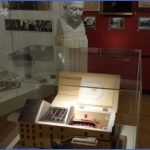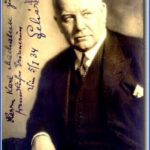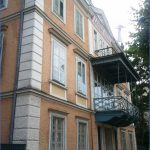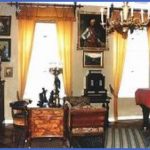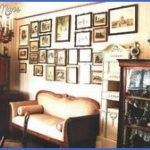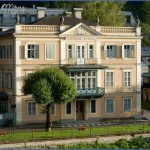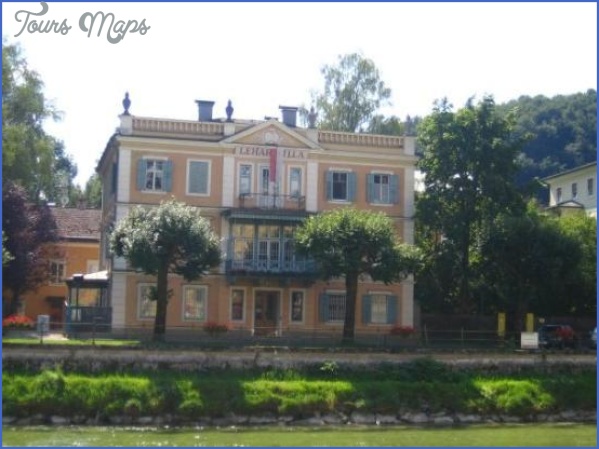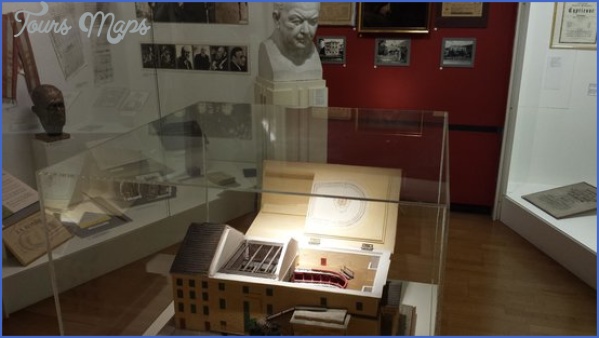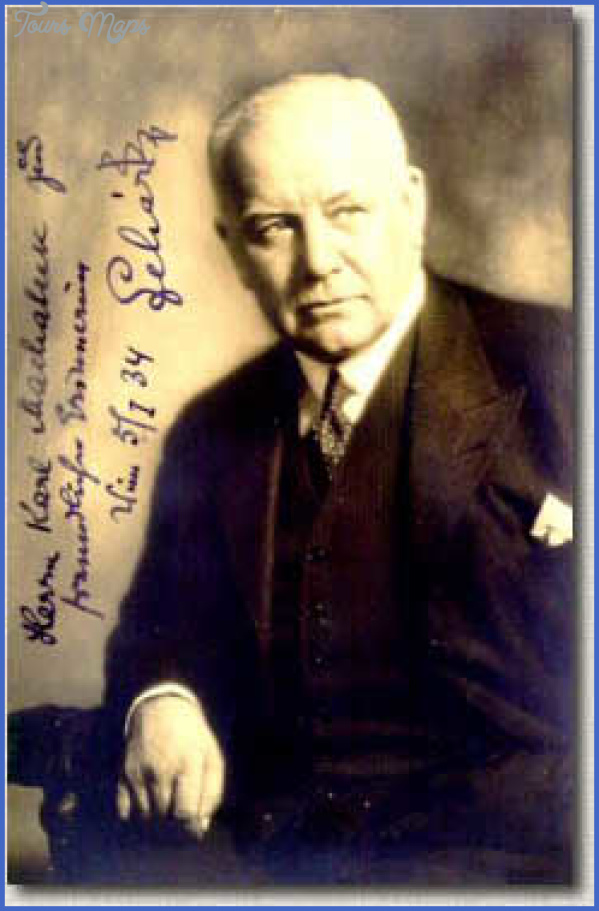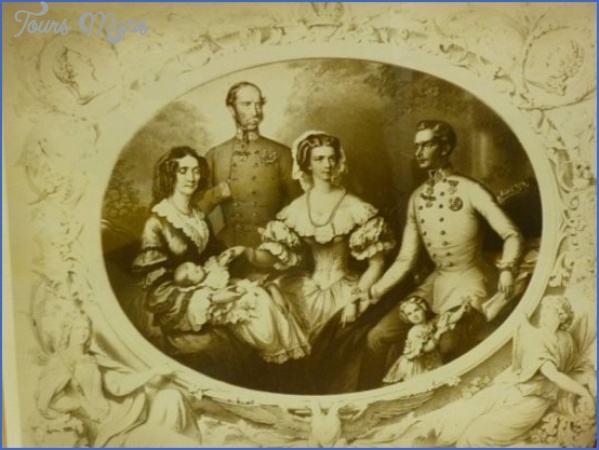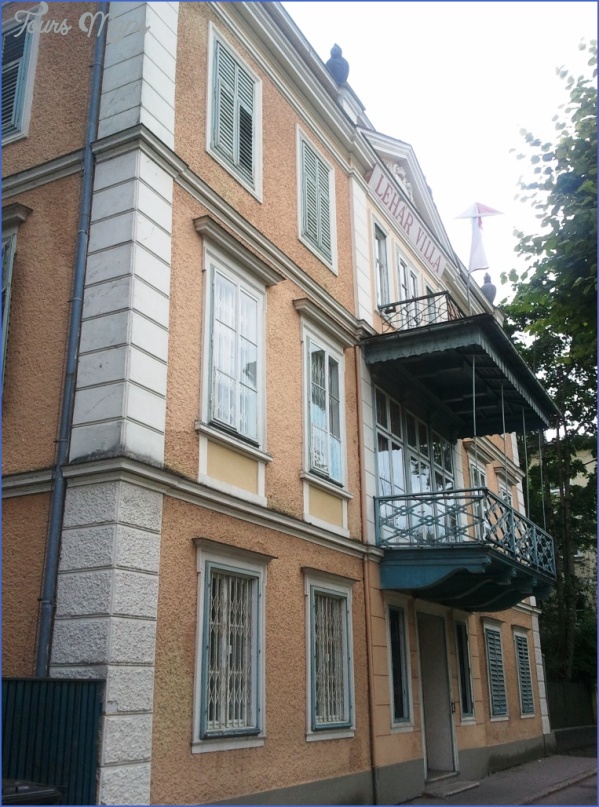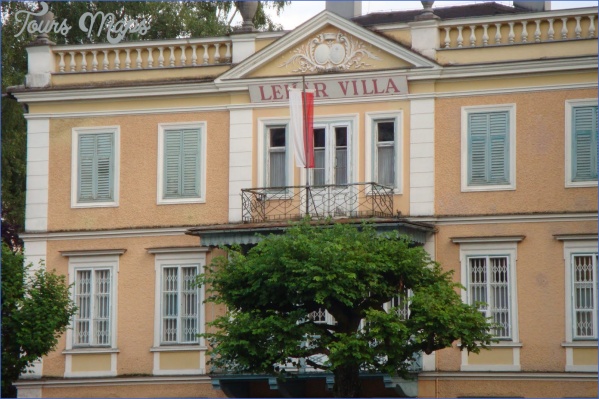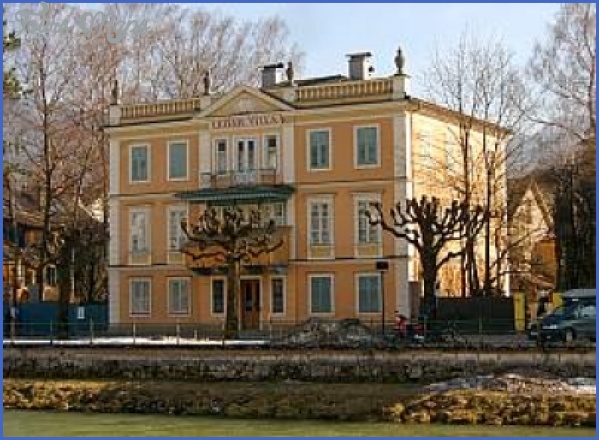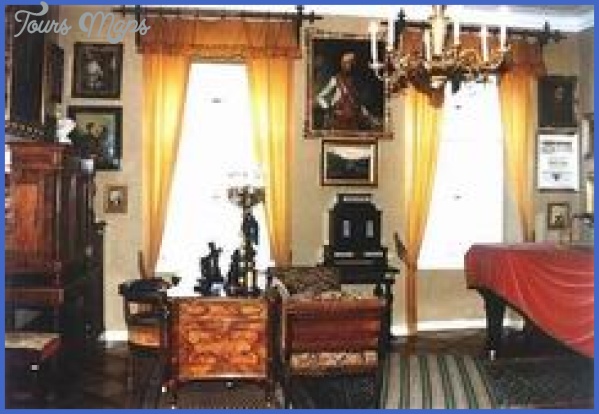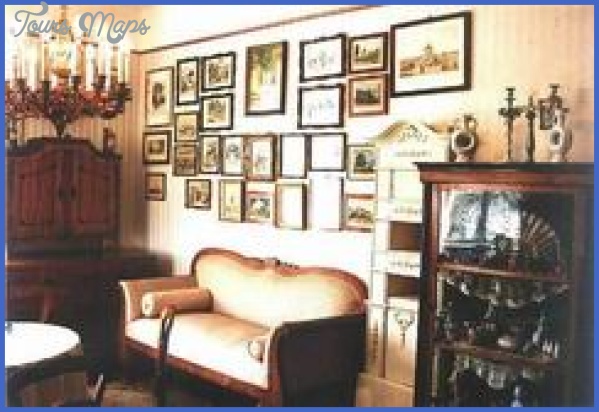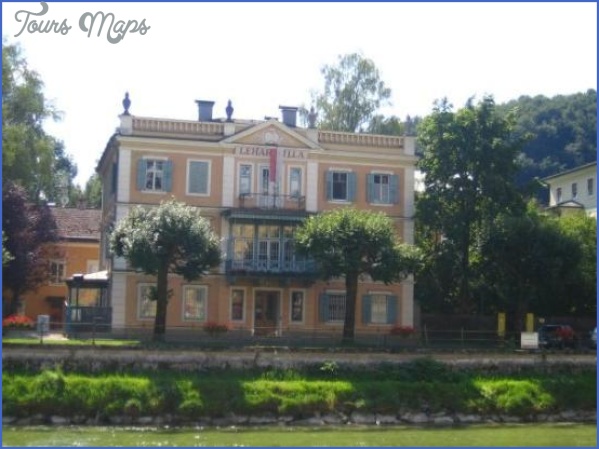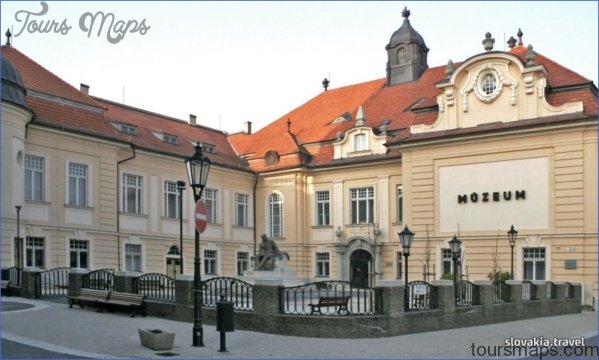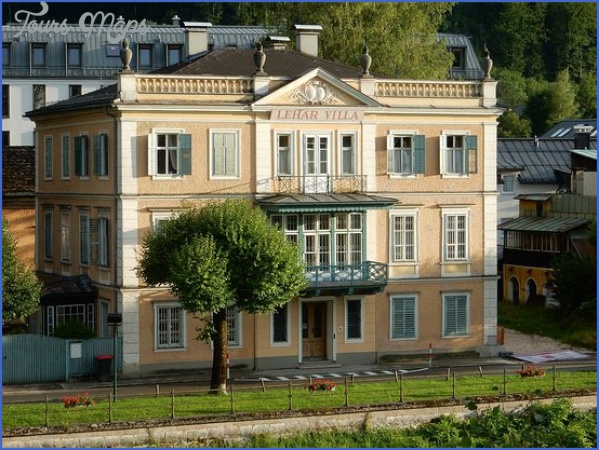LEHAR MUSEUM
The delightful Salzkammergut spa town of Bad Ischl is situated on a bend of the river Traun and surrounded by mountains and forest. Franz Lehar (b 1870) was not the first composer to seek it out: Brahms, Bruckner, Carl Millocker and the younger Johann Strauss had preceded him there, although he was the first to live in Bad Ischl. It was also the summer resort of Emperor Franz Josef (his house, the Kaiservilla, is now open to the public). In 1910 Lehar bought an impressive villa on the Esplanade (now Franz-Lehar-Kai), near the bridge, immediately opposite the fashionable Hotel Elisabeth.
The success of his Gold und Silber waltz (1902) and his operettas Die lustige Witwe (1905), Der Graf von Luxemburg (1909) and Zigeunerliebe (1910) had enabled him to acquire this attractive country residence, and it was here that most of his later works were composed. ‘In Ischl habe ich immer die besten Ideen’ (‘in Ischl I always have the best ideas’), he proclaimed, by which he must have meant his operettas Paganini (1925), Friederike (1928), Das Land des Lachelns (which includes the song closely associated with the tenor Richard Tauber, ‘Dein ist mein ganzes Herz’) and Giuditta (1934), commissioned by the Vienna Staatsoper.
In the 1930s and early 40s Lehar had a second home, in Vienna, in the northern part of Nufidorf, at Hackhofergasse 18, known as the Schlofil (‘little castle’). In 1944, beset by ill health, Lehar and his wife Sophie gave it up and retired to Bad Ischl. They went for treatment to Zurich,
LEHAR MUSEUM Photo Gallery
The Lehar Villa where Sophie died in 1947; Lehar returned to Ischl alone in 1948, and died in the villa on 24 October. He is buried in the town. He bequeathed the villa and its contents to Bad Ischl on condition that it be preserved unchanged as a museum. Nine rooms on three floors are available for inspection. One striking feature of the villa is the omnipresent sound of water and birds. It has an air of always having been a museum (and not obviously a musical one), yet there is no real museum display to interrupt the domestic ambience. The nature of Lehar’s fame dictated that he was often the recipient of lavish gifts, and accordingly the visitor encounters an eclectic assembly of furnishings, paintings and engravings, numerous signed photographs, statuary, china, glassware and a rich array of objets d’art (among them a Faberge goblet given to the composer by the last tsar and a picture attributed to Van Dyck), revealing what was perhaps a rather uncritical passion for collecting. Up the staircase to the first floor, past a stream of lithographs depicting Hungarian history, is Lehar’s Big Study, where he composed and where his American Steinway grand piano and other musical furniture (an especially beautiful inlaid music cabinet and his imposing desk) are to be found. Dotted around the room are some of his numerous awards and gifts, such as the vase decorated with operetta characters presented to him in 1941 by the Hungarian Philharmonic. Painted plaster cherubim preside over the adjoining Receiving Room, with its breathless combination of flamboyant French, Italian and (possibly more subdued) English furniture. Lehar’s bedroom, now known as the Death Chamber, is decorated with religious paintings and icons and the ubiquitous composer’s death mask. The Smoking Room, on the second floor, is dominated by a portrait of Lehar painted by Albert Kaan in 1932 and 18th-century Piranesi engravings. Next door is the Small Study, where he dealt with his correspondence and displayed his collection of photographs and a letter from Puccini; in the corner cabinet is a manuscript of Der Graf von Luxemburg. Beyond is the Biedermeier Room where the composer is said to have taken tea regularly with his wife and where his collection of elephant miniatures is still kept. The Viennese house, the Schlofil, was rebuilt in its present form in 1737; from 1802 it was the home of Emanuel Schikaneder, librettist and first Papageno in Die Zauberflote, and himself a composer (see Schikaneder). Today the doorway is marked with relief portraits of both men, put up in 1998. In 1931 Lehar moved there from Theobaldgasse, in the 6th district, where he had lived since 1919, and he bought the property the next year; he and his wife spent most of their time there from 1938 to 1944. Franz’s brother Anton Freiherr von Lehar, a general in World War I, inherited the house on his death, but not its contents, which were sold off. In the ensuing years (he died in 1962) he was able to assemble a collection of materials relevant to his brother and to some extent to Schikaneder. It became a museum in 1950, privately owned, and lovingly maintained by the nurse who saw Anton through his final illness and to whom he in turn bequeathed the property and its contents. The commemorative material is housed in a single large room, on the first A room in the Lehar Villa; the bed on which he died can be seen through the doorway Rights were not granted to include these illustrations in electronic media. Please refer to print publication floor. There are further relics here of Lehar’s successes: an icon given to him in St Petersburg, a set of Hungarian musical glasses, a Legion d’honneur and other decorations, a golden baton in the form of a snake, a plaque noting the 300th performance of Die lustige Witwe at the Theater an der Wien. There is also furniture, including his desk and his first piano (dating from 1873), and such personal items as his pocket watch, rings and batons, as well as portraits, statuettes and many photos, some of them from his early family life and his military youth but many too of the artists who sang in his operettas. Their performances are commemorated as well, in the wall displays and in cases, with programmes, handbills and scores, among them some autograph manuscript material. One corner is devoted to Anton and his military career. At the rear is a balcony, looking down over a large and attractive garden; at the front, by the street door, is a small chapel, in which Richard Tauber and his English wife were married. A little way up the street is a house marked with a plaque commemorating the birth there of Carl Millocker. Lehar is also commemorated in Vienna at the Raimundtheater, in Wallgasse, where there is a bust in the foyer, and since 1980 by a further bust in the Stadtpark, near the Kursalon. In the 6th district there is a street called the Lehargasse.
Maybe You Like Them Too
- Top 10 Islands You Can Buy
- Top 10 Underrated Asian Cities 2023
- Top 10 Reasons Upsizing Will Be a Huge Travel Trend
- Top 10 Scuba Diving Destinations
- World’s 10 Best Places To Visit


